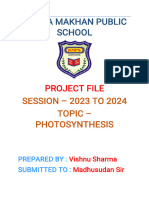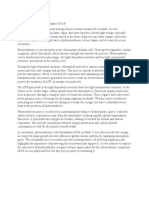Sure, I'd be happy to help you with that. Let's choose a random science topic.
How about
"Photosynthesis"? I'll write some notes on that for you.
Photosynthesis is the process by which green plants, algae, and some bacteria convert light energy
into chemical energy in the form of glucose. This process is essential for life on Earth as it provides
the oxygen we breathe and serves as the primary source of food for most organisms.
1. Light-dependent reactions: These reactions occur in the thylakoid membranes of the
chloroplasts. They involve the absorption of light energy by chlorophyll and other pigments, which
excites electrons. This energy is then used to split water molecules into oxygen, hydrogen ions, and
electrons. The oxygen is released as a byproduct, while the hydrogen ions and electrons are used
in the next stage of photosynthesis.
2. Light-independent reactions (Calvin cycle): These reactions occur in the stroma of the
chloroplasts. They use the energy from ATP (produced in the light-dependent reactions) and
NADPH (also produced in the light-dependent reactions) to convert carbon dioxide into glucose.
This process involves a series of enzyme-catalyzed reactions, including carbon fixation, reduction,
and regeneration of the starting molecule.
Photosynthesis is a complex process that requires many different molecules and enzymes. Some of
the key players include chlorophyll, ATP synthase, Rubisco, and the light-harvesting complexes.
The process is also sensitive to various environmental factors, such as light intensity, temperature,
and carbon dioxide concentration.
In summary, photosynthesis is a crucial process that allows plants and other organisms to convert
light energy into chemical energy. It involves two main stages: the light-dependent reactions, which
produce ATP and NADPH, and the light-independent reactions, which use these energy-rich
molecules to convert carbon dioxide into glucose. Understanding photosynthesis is essential for
understanding the fundamental processes that support life on Earth.

























































